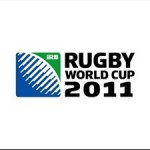 With fewer set pieces, a substantial reduction in kicks from hand and many more passes, Rugby World Cup 2011 saw a renewed emphasis on running Rugby.
With fewer set pieces, a substantial reduction in kicks from hand and many more passes, Rugby World Cup 2011 saw a renewed emphasis on running Rugby.
This is highlighted in the IRB Game Analysis Unit’s comprehensive statistical report which details all the trends from Rugby’s showcase event and takes a closer look at how New Zealand lifted the Webb Ellis Cup for the second time.
The report provides a detailed analysis of all 48 matches and the contrasting styles of the 20 participating teams and details how Rugby World Cup has evolved since 1995 and why Rugby World Cup 2011 was the most competitive tournament to date.
Rugby World Cup 2011 highlights
- Scrums, lineouts and kicks were reduced from Rugby World Cup 2007, while passes significantly increased, highlighting an emphasis on running Rugby
- In almost 80 percent of matches, the team scoring the most tries won the match – in only one match did the team scoring the fewest tries win because of penalty goals
- Winning margins in the opening Pool matches between Tier 1 and Tier 2 halved, reflecting the improved performances of Tier 2 teams since France 2007 with Tier 1 teams no longer pulling away from Tier 2 opposition in the final 20 minutes of a match as frequently as in the past
- The smaller winning margins extended across the whole tournament with Tier 1 v Tier 1 matches producing far small winning margins than ever before
- Despite such competitive matches, yellow cards were half those issued at Rugby World Cup 2007
- Rugby World Cup 2011 also confirmed that any scrum problems are concentrated on matches between Tier 1 teams with collapses and penalties in matches played between Tier 2 teams being substantially fewer
In the most detailed Rugby World Cup statistical analysis ever, the report provides a detailed analysis of the performances of the teams in all aspects of play, including scoring, winning margins, impact of penalty goals on match results, rate of try conceding, source of tries, try locations, timing of tries and penalty goals, ball in play and possession, passing, rucks and mauls, kick-offs and restarts, lineouts, free kicks, penalties conceded, penalty options taken and cards.
The report also features a fascinating analysis of how the tournament has evolved since Rugby World Cup 1995 to become a Game of fewer set pieces and greater ball in play time. From a time when there were as many set pieces as breakdowns, there are now four times as many breakdowns as scrums and lineouts combined.
The comparison with 1995 shows:
- Ball in play has increased by 33 per cent
- Passes have gone from 179 per match to 263 – an increase of almost 50 per cent
- Rucks/mauls have more than doubled, going up by almost 100 from 69 per match to 162 per match
- Kicks have gone down from 75 to 41 per match
- Scrums have gone down from 27 to 17 with lineouts down from 37 to 24
But does this make for a better game?
The ball remains static in a ruck. What is the ratio of to rucks? Even though the ball is in play in a ruck, it goes nowhere, and especially when a team is trying top retain possession in the last few minutes in a close game, we see the pick and drive, maul, ruck, and cyscle is repeated. Does this make for more exciting rugby?
@ Lion4ever:
Perhaps not, but it is better than watching candy floss rugby.
Users Online
Total 339 users including 0 member, 339 guests, 0 bot online
Most users ever online were 3735, on 31 August 2022 @ 6:23 pm